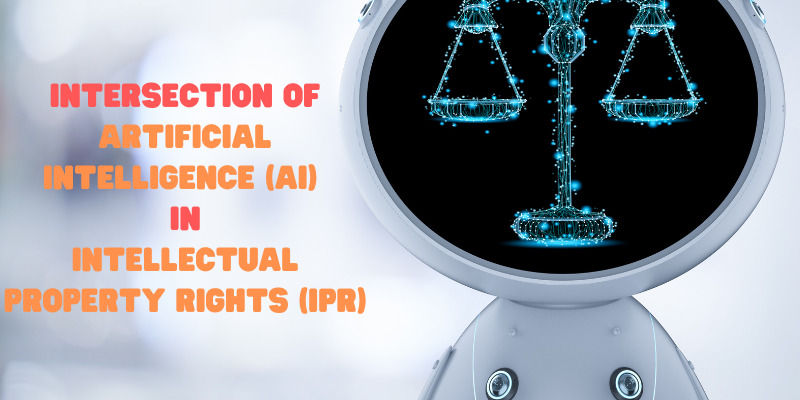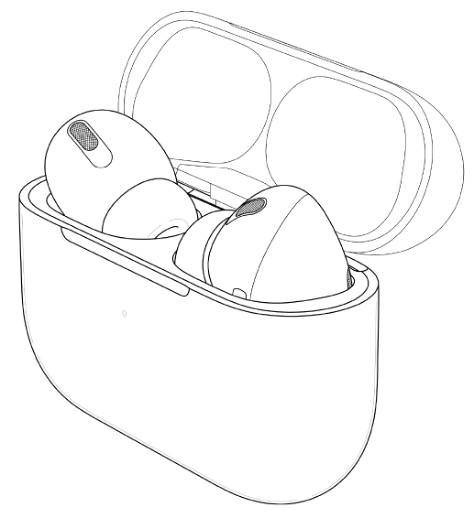
Intersection of Artificial Intelligence and Intellectual Property Laws
In recent years, the rapid advancements in artificial intelligence (AI) have significantly impacted various aspects of human life and revolutionized numerous industries. As AI continues to develop and integrate into our daily lives, the intersection of AI and intellectual property (IP) laws has become an increasingly important topic. This blog post aims to explore this intersection, discuss the challenges it presents, and suggest potential solutions for striking a balance between innovation and protection.
The Growing Impact of Artificial Intelligence
AI encompasses a wide range of technologies, from machine learning algorithms to natural language processing and computer vision. These technologies enable machines to learn from data, make decisions, and perform tasks that traditionally required human intelligence.
AI has been successfully applied in various sectors, including healthcare, finance, manufacturing, and transportation, where it has led to significant improvements in efficiency, cost reduction, and the development of innovative products and services. This rapid growth of AI has raised several critical questions related to IP rights, particularly in the areas of patents, copyrights, and trade secrets.
Patents and Artificial Intelligence
A patent grants its owner the exclusive right to exclude others from making, using, selling, and importing an invention for a limited period, usually 20 years from the filing date. In the context of AI, patent protection raises several questions:
1. Patentability of AI algorithms
AI algorithms are often based on mathematical models and statistical techniques, which may be considered abstract ideas. In many jurisdictions, abstract ideas, mathematical formulas, and laws of nature are not eligible for patent protection. However, a practical application of such ideas or formulas that provides a technical solution to a problem may be patentable, such as in the case of software patents.
To determine the patentability of AI inventions, it is essential to analyze the specific implementation of the AI algorithm and whether it provides a technical solution to a real-world problem.
2. Inventorship and Ownership
As AI systems become more sophisticated, they may be capable of generating inventions autonomously, without human intervention. This raises the question of whether an AI system can be considered an inventor and who owns the rights to the AI-generated invention.
Currently, most jurisdictions require that an inventor be a natural person, and IP laws do not recognize AI systems as inventors or legal entities. This may lead to situations where inventions generated by AI systems are not eligible for patent protection due to the lack of a human inventor. One potential solution could be to attribute AI-generated inventions to the developers or owners of the AI system, but this approach may also face legal challenges.
Copyrights and Artificial Intelligence
Copyright law protects original works of authorship, such as literary, artistic, and musical works. In the context of AI, copyright protection raises several questions:
1. Originality and Creativity
AI systems are increasingly being used to create various types of content, including articles, paintings, music, and even software code. However, to qualify for copyright protection, a work must be original and exhibit a certain level of creativity.
Since AI-generated works are created through the processing of data and the application of algorithms, it is debatable whether such works can be considered original or creative. In most jurisdictions, copyright protection requires human authorship, which means that AI-generated works may not be eligible for copyright protection. Copyrights and industrial designs may intersect with AI in different ways, depending on the jurisdiction.
2. Infringement
AI systems may inadvertently copy or reproduce copyrighted works in the process of learning from data, potentially leading to copyright infringement. For example, an AI system trained on a dataset of copyrighted images may generate new images that incorporate elements from the copyrighted works.
One potential solution to this issue is the development of AI systems that can identify and avoid using copyrighted content. However, this may not always be practical, especially in cases where the copyrighted material is essential for the AI system to learn and develop its capabilities. In these situations, licensing agreements or the adoption of fair use principles may be considered to address potential infringement issues.
Trade Secrets and Artificial Intelligence
Trade secrets encompass confidential information that provides a competitive advantage to its owner. AI technologies, such as machine learning models, training data, and algorithms, may be considered trade secrets if they meet the necessary requirements of confidentiality, economic value, and reasonable efforts to maintain secrecy. The choice between patent vs. trade secret protection may depend on various factors, including the nature of the AI technology and the competitive landscape.
In the context of AI, protecting trade secrets raises several concerns:
1. Maintaining Confidentiality
AI systems often require large amounts of data for training and development. Ensuring the confidentiality of this data can be challenging, especially when sharing it with third parties or when the AI system is deployed in a cloud-based environment. It is crucial for businesses to adopt robust data security measures and establish clear policies regarding data access and usage to protect their trade secrets.
2. Reverse Engineering
AI models, once deployed, may be susceptible to reverse engineering, potentially revealing the underlying algorithms and training data. This can pose a significant threat to the trade secrets of AI developers. To mitigate this risk, developers can adopt techniques such as obfuscation, encryption, and secure execution environments to make reverse engineering more difficult.
Balancing Innovation and Protection
As AI continues to evolve, it is essential for IP laws and regulations to adapt to the changing landscape. Policymakers and stakeholders need to strike a balance between promoting innovation and providing adequate protection for AI-related IP. Some potential approaches to achieve this balance include:
- Clarifying Patent Eligibility: Providing clear guidelines on the patentability of AI inventions can help innovators navigate the patent system more effectively and reduce uncertainties in the patent application process. Understanding the basics of patent laws can be a helpful starting point.
- Recognizing AI-generated Works: Revisiting the concept of authorship and originality in copyright law to accommodate AI-generated works can help address the challenges posed by AI in the creative domain. This may involve granting limited copyright protection to AI-generated works or recognizing the human-AI collaboration in the creative process.
- Encouraging Open Innovation: Promoting open innovation initiatives, such as open-source AI frameworks and shared datasets, can help foster a collaborative environment in the AI ecosystem while ensuring that IP rights do not stifle innovation.
- Adapting Trade Secret Protection: Strengthening trade secret protection in the AI context may involve developing best practices for maintaining confidentiality and updating legal frameworks to address the unique challenges posed by AI technologies.
- International Harmonization: As AI technologies transcend geographical boundaries, it is essential to harmonize IP laws and regulations across different jurisdictions to facilitate global innovation and collaboration in the AI domain. For instance, understanding the types of patent applications in India can provide insight into the complexities of international IP laws.
Conclusion
The intersection of artificial intelligence and intellectual property laws presents a complex and evolving landscape that demands careful consideration and adaptation. As AI continues to advance and reshape industries, it is crucial for IP laws to strike a balance between fostering innovation and protecting the rights of innovators. By reexamining and updating the current IP frameworks, policymakers, stakeholders, and innovators can work together to navigate the challenges and unlock the full potential of AI technologies.
The increasing influence of AI on patent filings by academic institutions and various other sectors highlights the importance of understanding the nuances of IP protection in the context of AI. Additionally, the clarity of patent claims plays a vital role in ensuring that AI innovations are adequately protected.
Moreover, the role of AI in protecting intellectual property from 3D printing further illustrates the complex interplay between AI and IP laws. As we continue to push the boundaries of AI technologies, a thorough understanding of the legal implications will be essential for businesses, researchers, and policymakers alike. By fostering open dialogue and collaboration, we can help shape the future of AI and IP laws in a manner that supports both innovation and protection.



Interpretation of Section 3(i) of the Indian Patent Act, 1970 in the Context of Non-Invasive Prenatal Testing
Introduction The advent of Non-Invasive Prenatal Testing (NIPT) has revolutionized…

Branded Medicines vs. Generic Medicines: The Role of Patents
In the pharmaceutical industry, the distinction between branded and generic…

Utility Patents vs Design Patents (Industrial Designs)
While the definition of Patent merely covers…
Categories
Recent Discussions
Interpretation of Section 3(i) of the Indian Patent Act, 1970 in the Context of Non-Invasive Prenatal Testing
Introduction The advent of Non-Invasive Prenatal Testing (NIPT) has revolutionized prenatal diagnostics, enabling expectant parents to assess the genetic health of the fetus…
Recent Discussions
Branded Medicines vs. Generic Medicines: The Role of Patents
In the pharmaceutical industry, the distinction between branded and generic medicines is an essential one. Understanding this distinction is crucial not just for…



